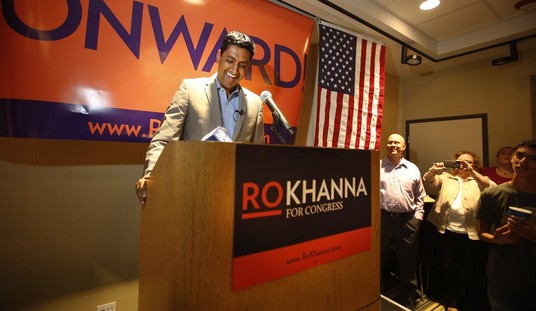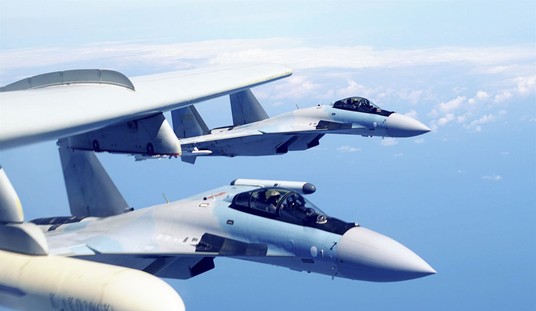Analysts have had understandable trouble taking the inflamed rhetoric from Pyongyang seriously for the last few weeks. It has a cyclical quality to it, and the recent election of Park Geun-hye in South Korea gave the Kim regime in the DPRK a perfect excuse to vent its spleen. Even the missile tests and the threats to the US come out of the Kim playbook of the past several years, they have pointed out. The real indication of a serious breach, they predicted, would be a sudden stop to cooperation at the one joint venture both countries share, an industrial center in the North Korean city of Kaesong. Closing access to the facility would be a huge red flag, an indication that Pyongyang wants to burn its bridges.
Today, the red flag is out:
North Korea on Wednesday barred South Korean workers from entering a jointly run factory park just over the heavily armed border in the North in the latest sign that Pyongyang’s warlike stance toward South Korea and the United States is moving from words to action. …
The Kaesong industrial park started producing goods in 2004 and has been an unusual point of cooperation in an otherwise hostile relationship between the Koreas, whose three-year war ended in 1953 with an armistice. Its continued operation even through past episodes of high tension has reassured foreign multinationals that another Korean War is unlikely and their investments in prosperous dynamic South Korea are safe.
“The Kaesong factory park has been the last stronghold of detente between the Koreas,” said Hong Soon-jik, a North Korea researcher at the Seoul-based Hyundai Research Institute.
He said tension between the Koreas could escalate further over Kaesong because Seoul may react with its own punitive response and Pyongyang will then hit back with another move.
This is also not unprecedented. Kim Jong-un’s father suspended cooperation at Kaesong for three days in 2009 after the annual joint military exercises between South Korea and the US. That also was accompanied by a test of their long-range missile capability and a nuclear test, both of which failed. In this case, though, the DPRK is allowing South Korean workers trapped in the North to return home, unlike in 2009.
This follows a more serious threat to reopen the Yongbyon nuclear reactor, which had been a key for producing the material for North Korea’s nuclear weapons. CBS reports that one nuclear non-proliferation analyst says not to expect an immediate restart, but the next few weeks will be critical in understanding Pyongyang’s real intentions:
North Korea said Tuesday that it will quickly begin “readjusting and restarting” the facilities at its main Yongbyon nuclear complex, including the plutonium reactor and a uranium enrichment plant. Both could produce fuel for nuclear weapons. Analysts saw the statement as Pyongyang’s latest attempt to extract U.S. concessions by raising fears of war.
Nuclear non-proliferation expert Mark Fitzpatrick, of the IISS, told CBSNews.com that Tuesday’s warning from Pyongyang was merely “an announcement of an intention.”
“It would take them at least 6 months to get it going again,” said Fitzpatrick. “The coming weeks will probably provide some evidence as to whether they’re following through on it.”
“There’s a long way to go between a stated intention and actually being able to pull it off,” said State Department spokeswoman Victoria Nuland.
True — but that’s what the US initially said about North Korea’s attempts to build a nuclear-weapons program in the first place. It’s not going to be that difficult for them to rebuild it, if they haven’t already done so more clandestinely.
CNN has a report from the ground at Paju, just outside the checkpoint for the Kaesong facility for the South. While workers are being allowed to leave, over 800 South Koreans are still in the facility. They also point out that the facility makes a lot of hard cash for Pyongyang, which means this is akin to cutting off their noses to spite their faces. But the Kim regime “only has a few cards in the deck” to play, the reporter explains, “and this is one of them.” Left unsaid: the Kim regime is a few cards short of a full deck, but perhaps CNN just assumes everyone knows that.







Join the conversation as a VIP Member